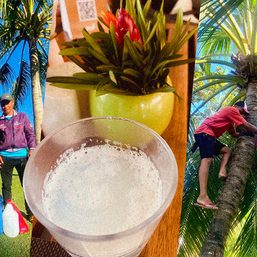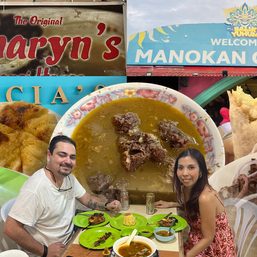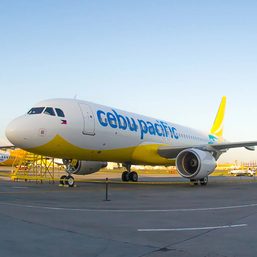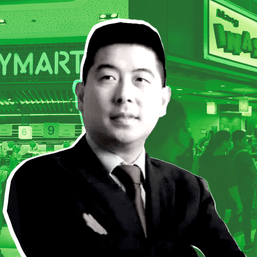SUMMARY
This is AI generated summarization, which may have errors. For context, always refer to the full article.

MANILA, Philippines – Here’s another sign of an expanding Philippine middle class.
Filipinos who consume hard drinks are shifting to more expensive imported spirits, according to billionaire Lucio Co’s The Keepers Holdings Incorporated (Keepers).
“The spirits segment is undergoing shifts in consumer preferences in favor of higher-quality, premium offerings – a phenomenon that the Group has and will continue to capitalize on to gain ground against local competitors,” Keepers said in its first quarter 2024 earnings report/investor presentation released last May 15.
Keepers has seen this trend in recent years, which it describes as the “premiumization consumer trend in the Philippines.”
The company said that its leadership in the Philippines’ imported spirits segment makes it “well-positioned to capture” the premiumization trend. It also cited its long-standing relationships with brand owners that are global market leaders, such as Williams Humbert, Treasury Wine Estates, and Suntory Global Spirits.
The price range of Keepers’ imported spirits portfolio is from P200 to P183,000. The bulk of its sales comes from its Alfonso I brand, which costs P200 for a 700 mL standard bottle as of end 2023.

The alcohol beverage industry in the Philippines is dominated by San Miguel Beer, Ginebra San Miguel, Emperador, and Tanduay. These four sell over 400 million cases yearly. The imported spirits segment sells only over 7 million cases in the Philippines or less than 2% of total cases sold, Keepers Holdings President Jose Paulino Santamarina said in a previous interview on the ABS-CBN News Channel (ANC).
Billionaire Andrew Tan’s Emperador Distillers Incorporated produces the Philippines’ number one local brandy. It had a 98% market share of domestic brandy in terms of sales volume. Lucio Tan’s Tanduay Distillers Incorporated, on the other hand, is strong in Visayas and Mindanao, with many alcohol drinkers there choosing Philippine-made Tanduay Rhum Dark and Tanduay Light.
Keepers, however, says its niche market – the imported segment – is growing. Santamarina cited studies by IWSR, an independent company based in the United Kingdom that specializes in studying the global beverage alcohol market, projecting that the imported spirits segment will grow 14% post-pandemic versus 1% for local spirits.
In its latest 2023 annual report released last April 15, billionaire Ramon Ang’s Ginebra San Miguel Incorporated (GSMI), the Philippines’ leading hard liquor company, acknowledged that Keepers’ Alfonso I was gaining in the Philippines’ alcohol market.
“Recently, value-priced imported Alfonso I Light Brandy, distributed by Montosco, Inc., has likewise been gaining popularity,” GSMI said.
Alfonso I, a Spanish brand, is the number one imported brandy in the Philippines, while Scotland’s Johnnie Walker is the top imported blended scotch whisky in the country. Jim Beam is the top imported US whiskey in the Philippines. Jose Cuervo, a Mexican brand, is the Philippines’ number one imported tequila, while Korean brand Jinro is the top imported soju. All these are under Keepers’ brand portfolio.

Quoting IWSR, Keepers said the share of low-priced spirits (P100 and below) would rise from 25% in 2021 to 36% in 2025, while the share of higher-priced spirits (P100 and above) would decline from 75% to 64%.
The Philippines’ spirits consumption in 2020 amounting to P116 billion was dominated by gin at 35%, followed by brandy at 32%, and rum at 25%, according to the IWSR.
Keepers’ brands are available in Lucio Co’s nationwide grocery retail network – Puregold and S&R. There were 495 Puregold stores and S&R stores in the country as of first quarter of 2024. They’re also sold in bars, restaurants, hotels, and clubs. It also has other grocery retailers, sub-distributors, wholesalers, and online retailers.
Keepers’ revenues were up 15.9% in the first quarter of 2024, from P2.8 billion in 2023 to P3.3 billion in first quarter 2024. Net income rose 43%, from P420 million to P603 million in the same period.
Alcohol light
Another trend in the Philippines is the preference for no-alcohol or alcohol-light spirits. In the case of Keepers, its Alfonso I Light Brandy which is now its biggest brand. Its alcohol content is around 25% while the standard alcoholic blend of a brandy is around 40%.
“That’s the trend that’s happening right now. People are looking for something lighter and something healthier, so maybe that’s one of the factors why Alfonso is leading the imported segment right now because it’s lighter, easy-to-drink beverage while maintaining its flavor,” Santamarina said in the ANC interview.
The IWSR, in its latest forecast on the no- and low-alcohol market, said the share of this segment was expected to continue to grow in the coming years.
It projected that no-alcohol will continue to grab market share from traditional alcohol. IWSR said it expected no-alcohol to “command nearly 4% of Total Beverage Alcohol volumes” across the world’s major alcohol markets by 2027, although this is still a small share.
“As no- and low-alcohol becomes a more established part of the beverage alcohol landscape, growth is slowing after a peak in 2020 to 2021 – but the category is poised for robust gains in the coming years, spearheaded by no-alcohol and persistently strong recruitment levels,” Susie Goldspink, head of IWSR’ No- and Low-Alcohol Insights, said.
“Millennials remain the largest age cohort among no/low consumers,” except in a few developed markets like France, Germany, Japan, and Spain, IWSR said.
“LDA [Legal Drinking Age] Gen Zs and Millennials are more interested in trying new no-alcohol alternatives than older cohorts,” it said.
Ginebra San Miguel earnings
Meantime, GSMI, on Thursday, reported a 17% increase in revenues in the first quarter of 2024 compared to the same period in 2023. Net income was P1.9 billion or lower by 25% year-on-year, which GSMI attributed to the one-time income gain in March 2023 when it sold the rights of Don Papa Rum. Excluding this, GSMI said its net income would have been 38% higher.
Ginebra San Miguel Gin is the world’s largest-selling gin, according to global drinks journal, Drinks International. Aside from Ginebra, other GSMI brands include GSM Blue, Ginebra San Miguel Premium Gin, 1834 Premium Distilled Gin, Antonov Vodka, Añejo Gold Rum, G&T Ultrilight Spirit Drink, Primera Light Brnady, and Chinese wine Vino Kulafu.
Other signs of a growing Philippine middle class are Filipinos choosing to buy more iPhones via installments, more Filipinos investing in the stock market using GCash, and more malls being built in the provinces. You can read these stories here:
- ‘iPhones for everyone’: Apple’s premium device tops Home Credit’s phone sales in 2023
- The GCash effect: More middle-income earners join stock market
- SM to open 5 new malls in 2024 as PH retail rebounds big
– Rappler.com
Add a comment
How does this make you feel?
![[In This Economy] Is the Philippines quietly getting richer?](https://www.rappler.com/tachyon/2024/04/20240426-Philippines-quietly-getting-richer.jpg?fit=449%2C449)








There are no comments yet. Add your comment to start the conversation.